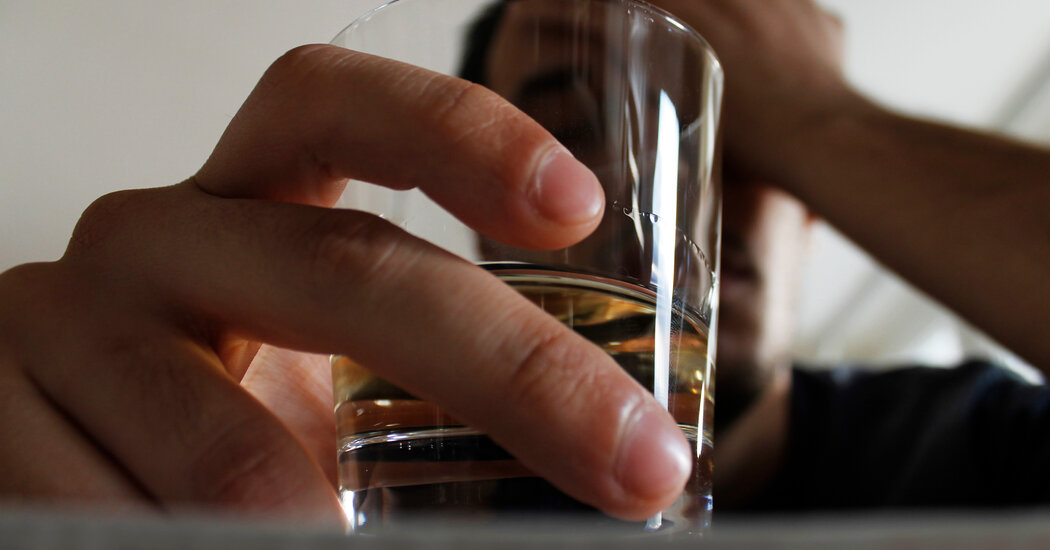Alcohol-related liver disease is the leading cause of death from excessive drinking — and while it’s curable in the earliest stages, many people don’t realize they have it until it’s too late to reverse.
Annual deaths caused by the disease are on the rise in the United States, having climbed 39 percent in recent years, according to new data from the Centers for Disease Control and Prevention. Death rates are highest in men and adults aged 50 to 64, though they are increasing more quickly among women and younger adults.
“People who are drinking are drinking more heavily than they were before, so I think that is the biggest factor,” said Dr. Jessica Mellinger, an assistant professor of gastroenterology and hepatology at the University of Michigan Medical School. And, she added, “we’re seeing that for the first time in this country, women are drinking as much as men.”
What is alcohol-related liver disease?
The first stage of the illness is fatty liver disease, or steatosis. This happens when fat starts to accumulate in the liver, which is responsible for metabolizing alcohol. In the second stage, excessive alcohol consumption activates the body’s immune system, causing inflammation in the liver.
“The two big ways that you can damage your liver are by putting fat into it and then by adding inflammation onto the fat,” Dr. Mellinger said.
If that damage continues, scar tissue can build up in the liver, leading to the third stage, cirrhosis. Approximately 20 percent of people with alcohol-related fatty liver disease will progress to cirrhosis.
Some people also develop alcohol-associated hepatitis, which is severe liver inflammation. This occurs most often in people with cirrhosis, but it can happen at any stage if people are drinking very heavily (eight to 10 drinks a day). Both liver cirrhosis and alcohol-associated hepatitis can be fatal.
What causes it?
The risk for alcohol-related liver disease increases when people drink more than the recommended limits: seven drinks a week for women and 14 for men. It goes up substantially for women who regularly consume more than three drinks per day and men who have more than four drinks per day, said Dr. Sasha Deutsch-Link, a fellow in gastroenterology and hepatology at the University of North Carolina at Chapel Hill School of Medicine. (Because women metabolize alcohol differently from men, they have a greater risk of disease if they drink the same amount.)
At that level of alcohol use, an estimated 90 percent of people have fat deposits in their livers. The fat can start to accumulate rapidly — in some cases, after just six months of heavy drinking, said Dr. Rohit Loomba, the chief of gastroenterology and hepatology at UC San Diego Health.
Cirrhosis takes years or decades to develop. As a result, severe liver disease is more common in older adults, though Dr. Deutsch-Link said she had seen 20-year-olds with cirrhosis or alcohol-associated hepatitis.
Metabolic conditions, such as obesity, diabetes or hypertension, can also damage the liver. This puts people “at increased risk of progressing to liver disease more quickly at lower levels of alcohol consumption,” Dr. Deutsch-Link said. Worsening metabolic health among Americans may be another reason for the rise in deaths from alcohol-related liver disease.
What are the signs of liver damage?
There are no symptoms in the early stages of alcohol-related liver disease, which makes it difficult to identify.
“The majority of people who may be on their way to developing cirrhosis don’t even know that,” Dr. Loomba said.
When people are diagnosed in the first two stages, it’s often because blood tests have revealed abnormal liver function. These tests may be given as part of routine metabolic screening, or a doctor may recommend them if they are concerned about a patient’s drinking. If someone’s liver enzyme levels are abnormal, an ultrasound or M.R.I. can determine what stage of liver disease the person is in.
Often, though, liver disease is detected only when alarming symptoms appear in the late stages. A patient might have significant fluid and swelling in the abdomen, start vomiting blood or develop jaundice.
How is alcohol-related liver disease treated?
Because the liver can regenerate itself, the earliest two stages of liver disease can be reversed if the patient cuts out alcohol.
“The most important thing is stopping alcohol use for these patients,” Dr. Deutsch-Link said. To help with this, many liver clinics offer treatment for alcohol use disorder, including therapy, group programs or medication to reduce cravings.
Once someone has cirrhosis, “for the most part, that’s considered irreversible,” said Dr. Robert Wong, a clinical associate professor of gastroenterology and hepatology at Stanford University School of Medicine. “And once you get to cirrhosis, you’re at much higher risk of complications, progression, liver cancer and, of course, death, unfortunately.”
However, Dr. Loomba noted that even with cirrhosis, if people stop drinking, “the risk of dying from cirrhosis in the next year goes down significantly.”
If you’re concerned about your liver health, experts said, the first step is to talk to a doctor and ask about liver function tests. The goal is to catch any issues as early as possible.







